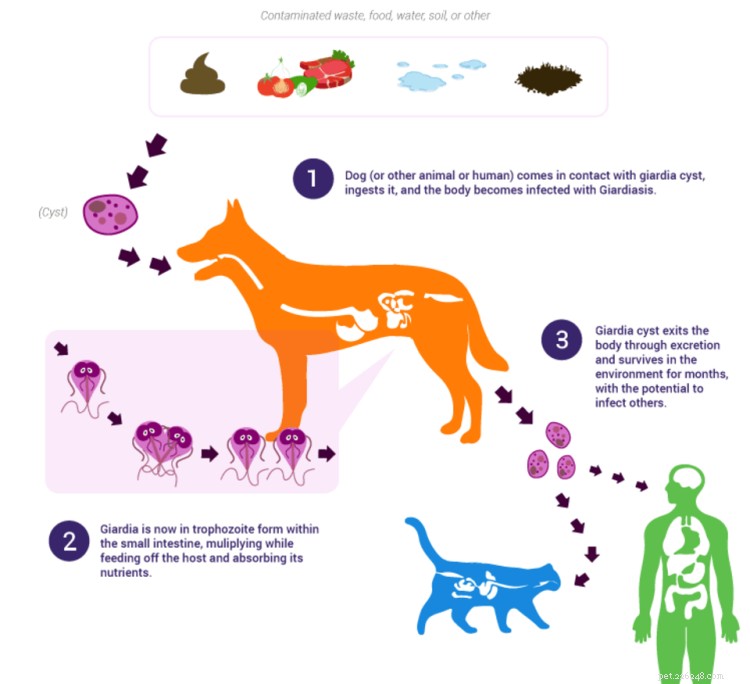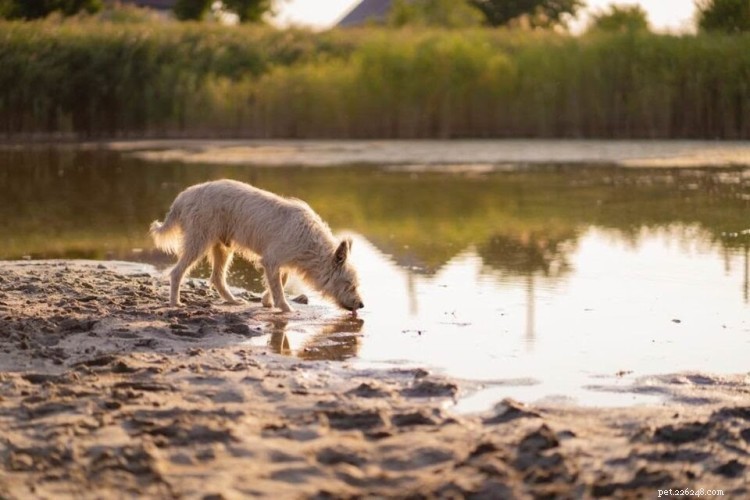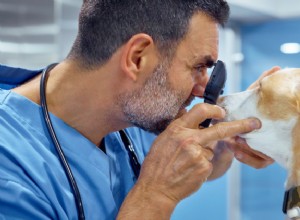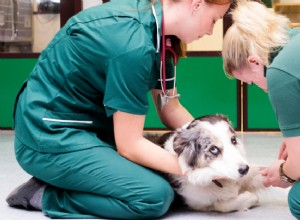
 Аллергия на собак:причины, симптомы и лечение
Аллергия на собак:причины, симптомы и лечение
 Чума у собак:причины, симптомы и лечение
Чума у собак:причины, симптомы и лечение
 Болезни сердца у собак:симптомы, причины, лечение
Болезни сердца у собак:симптомы, причины, лечение
 Сахарный диабет у собак:причины, симптомы и лечение
Сахарный диабет у собак:причины, симптомы и лечение
 Вишневый глаз у собак:причины, симптомы и лечение
Вишневый глаз у собак:причины, симптомы и лечение
 Ушные инфекции у собак:причины, симптомы и лечение
Ушные инфекции у собак:причины, симптомы и лечение
 Почечная недостаточность у собак:причины, симптомы и лечение
Почечная недостаточность у собак:причины, симптомы и лечение
Giardia — распространенный паразит, который легко передается между собаками, кошками и людьми. Помимо других симптомов, он вызывает диарею и рвоту, но, к счастью, есть некоторые меры, которые могут предпринять родители домашних животных, чтобы защитить своих щенков от инфекции.
Здесь есть все, что вам нужно знать о причинах, симптомах и лечении лямблиоза у собак, чтобы обеспечить безопасность вашего близкого человека.
Профессиональный совет :Некоторые полисы страхования домашних животных покрывают такие заболевания, как лямблии, питомниковый кашель и парвовирус, при условии, что заболевание не существует ранее, выполнены все необходимые или рекомендуемые прививки и приняты профилактические меры.
Оглавление:
Лямблии, также называемые Giardia duodenalis или лямблии кишечные с ветеринарной точки зрения, это одноклеточный паразит, размножающийся в кишечнике млекопитающих, амфибий и птиц .
Существуют разные формы паразита Giardia — цисты и трофозоиты, но обе они вызывают одинаковые эффекты у собак. Трофозоиты — это зрелые паразиты, которые живут в тонком кишечнике, где они в конечном итоге превращаются в цисты, которые выделяются с фекалиями инфицированного животного. Кисты могут выживать в течение недель или месяцев в различных средах, даже во влажных или холодных условиях.
Собаки могут заразиться Giardia при приеме внутрь паразита. Они могут есть что-то загрязненное фекалиями (траву, палочки и т. д.) или пить зараженную воду (лужи). Собаки, как известно, хорошо пережевывают все виды предметов, поэтому риск заражения лямблиями довольно высок.
Инфекция Giardia у собак также может передаваться щенками, которые играют и катаются в зараженной почве, или облизывая свое тело после контакта с зараженной поверхностью (собачья клетка, лоток и т. д.).
Как только Giardia попадает в кишечник собаки, паразит может распространяться дальше, даже если у вашего питомца нет симптомов инфекции. Это может быть довольно проблематично, особенно для тех, у кого в доме несколько домашних животных. Межвидовая передача редка, но паразит легко передается от одной собаки к другой. Поэтому, если у одной из ваших собак диагностирована лямблия, проконсультируйтесь с ветеринаром о мерах предосторожности, которые вы должны предпринять, чтобы защитить других ваших щенков.
Все породы подвержены риску заражения лямблиями, но пожилые собаки и щенки подвержены повышенному риску из-за их слабой или ослабленной иммунной системы . Лямблиоз также чаще встречается среди животных, содержащихся в группах, например, в приютах или питомниках.
Giardia is a zoonotic parasite, which means that it can be transmitted to humans, so you should always be careful when handling your pup's feces and wash your hands thoroughly thereafter. Also, refrain from drinking water from rivers, streams, and creeks with purifying it first. The parasite can be present in soil and on food, therefore it's wise to clean all produce before cooking.

Pets with Giardiasis usually respond well to treatment and don’t suffer lasting consequences. However, Giardiasis is very dangerous for animals with compromised immunity , including younger and older dogs
Not all dogs experience symptoms of Giardia infection, but it can be very unpleasant for those that do. The Giardia parasite obstructs dogs' ability to properly absorb nutrients, electrolytes, and water, resulting in diarrhea . The diarrhea can be mild or explosive, and intermittent or continuous, but puppies typically get it the worst.
Failure to diagnose dog Giardia can delay treatment, leading to sudden weight loss, dehydration, and the development of more serious health concerns - in severe cases, even death.
Some dogs are asymptomatic, while others might present the following Giardia symptoms:
If your beloved pet has a secondary infection or an immunosuppressive disease, the symptoms might be more intense. Be sure to talk to your veterinarian about an appropriate treatment plan as soon as possible.
The diagnosis of Giardia can be tricky because the cysts are shed in the feces intermittently. The standard diagnostic procedures, like complete blood count, urinalysis, and serum biochemistry will likely show normal results. Any abnormality present might result from lack of electrolytes due to dehydration caused by diarrhea - not the parasite directly. Your vet may therefore recommend additional tests to rule out possible conditions associated with your dog's symptoms.
The tests that give an accurate diagnosis of Giardia infection include:
Your vet might recommend a combination of tests before a final diagnosis is made.
Совет профессионала: If you notice any symptoms, the value of pet insurance shines during diagnostic coverage. Many plans provide reimbursement for the cost of testing, which is the only way to determine whether your dog has a Giardia infection or a larger health concern. Don’t attempt to check for cysts in your dog’s feces; they’re invisible to the human eye.
 (Image source:Hospital Veterinari Glories)
(Image source:Hospital Veterinari Glories)
Giardia infection is known to lead to digestive motility disorders and can induce inflammatory bowel disease, so all pets who contract the parasite should be treated by a vet .
Typically, the best treatment for Giardia is oral medicine, usually antiparasitic drugs and/or antibiotics that you can administer at home. The length of treatment depends on the drug chosen by the vet but typically lasts three to 10 days.
Your vet will also recommend bathing with a prescription shampoo on a regular basis to remove cysts and fecal matter from your dog’s fur and skin. Pay special attention to the hind legs, as this is where the cysts are most likely to be.
If your dog has severe dehydration caused by explosive diarrhea, they might be hospitalized to reduce the amount of stool movement before treatment starts. If your pet is vomiting persistently, stick to a bland diet once the vomiting is resolved.
With proper treatment, you can get rid of the parasite within two weeks. Be sure to follow your vet’s recommendations closely and take your dog to all follow-up appointments as requested.
All furniture, carpet, and toys that might have had contact with the infected animal must be cleaned to ensure there are no cysts lingering around the house.
First, scrub hard surfaces like floors, tables, crates, and trash cans with soap, then disinfect using bleach and water (3/4 cup of bleach per one gallon of water).
Clean upholstered furniture and carpet should be cleaned with regular detergent and disinfect by steam cleaning the area at 212°F for one minute (or 158°F for five minutes).
Other items like toys, pet beds, and clothing should be cleaned and sanitized on a daily basis the dog's treatment for Giardia infection. Dishwasher-safe food and water bowls can be cleaned in a dishwasher that has a dry cycle. If you don’t have a dishwasher, submerge these items in boiling water for at least one minute.
Clothing, bedding, and linens can be washed in the washing machine and then left to air dry thoroughly. If you have a clothes dryer, dry the clothes on the highest heat setting for half an hour.
If your pet is taking medication, wash linens frequently until a few days after the last dose of medication is given. Giardia’s survival depends on several factors, so it’s best to consult your vet for further advice.
When it comes to Giardia prevention, a little effort can go a long way. Even though it’s not always possible to control every aspect of your pup’s environment, there are certain things you can do to prevent them from catching the disease.
The most important thing is to reduce the chances of your dog drinking from contaminated water by ensuring access to fresh and clean water at all times. Before you take your pup for a walk, make sure they’ve had plenty of water or consider bringing some along. If your water source is known to contain Giardia, consider boiling your pup’s water or buying a filter that’s proven to remove the parasitic cysts from the water.
Keep an eye on your furry pal while they’re out, making sure that they don’t eat anything off the ground. Avoid areas where there may be large amounts of dog feces in the environment and be careful to avoid leaving your pup at group facilities that do not thoroughly sanitize the grounds.
Finally, pay attention to general hygiene. Pick up after your pup whenever they go potty to practice good manners and prevent the spread of Giardia in environment.
All pups, even those without diarrhea and those on year-round parasite preventives, should have at least one or two fecal samples performed each year to screen for gastrointestinal parasites, including Giardia.
If you’re concerned that your pup might have caught the parasite, get in touch with your veterinarian. They will help you determine if your pet needs to be examined and can provide more specific tips on how to prevent Giardia in your dog for future reference.

Глаукома — это состояние глаза, при котором накопление жидкости создает давление, которое обычно повреждает сетчатку и зрительный нерв. К сожалению, это болезненное состояние является наиболее распространенной причиной слепоты у собак, но это не значит, что нельзя ничего сделать для улучшения качест

Пиометра — одно из самых серьезных заболеваний, которым подвержены суки. Это вызвано наполнением матки гноем, и, если его не лечить, это может привести к летальному исходу. Хорошая новость заключается в том, что есть способ предотвратить заражение вашей собаки этой болезнью. Читайте дальше, чтобы